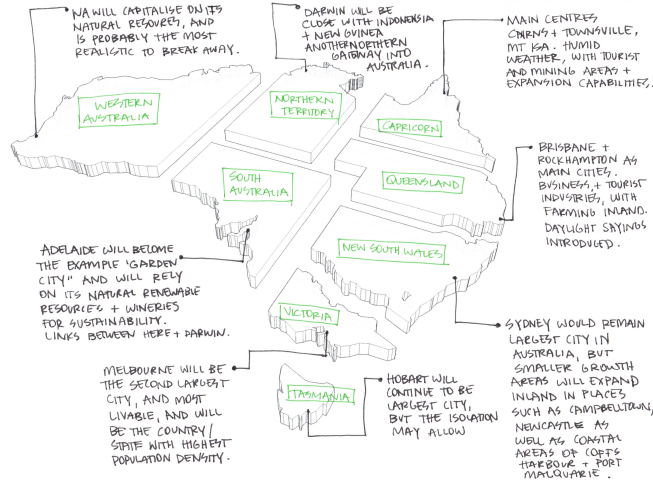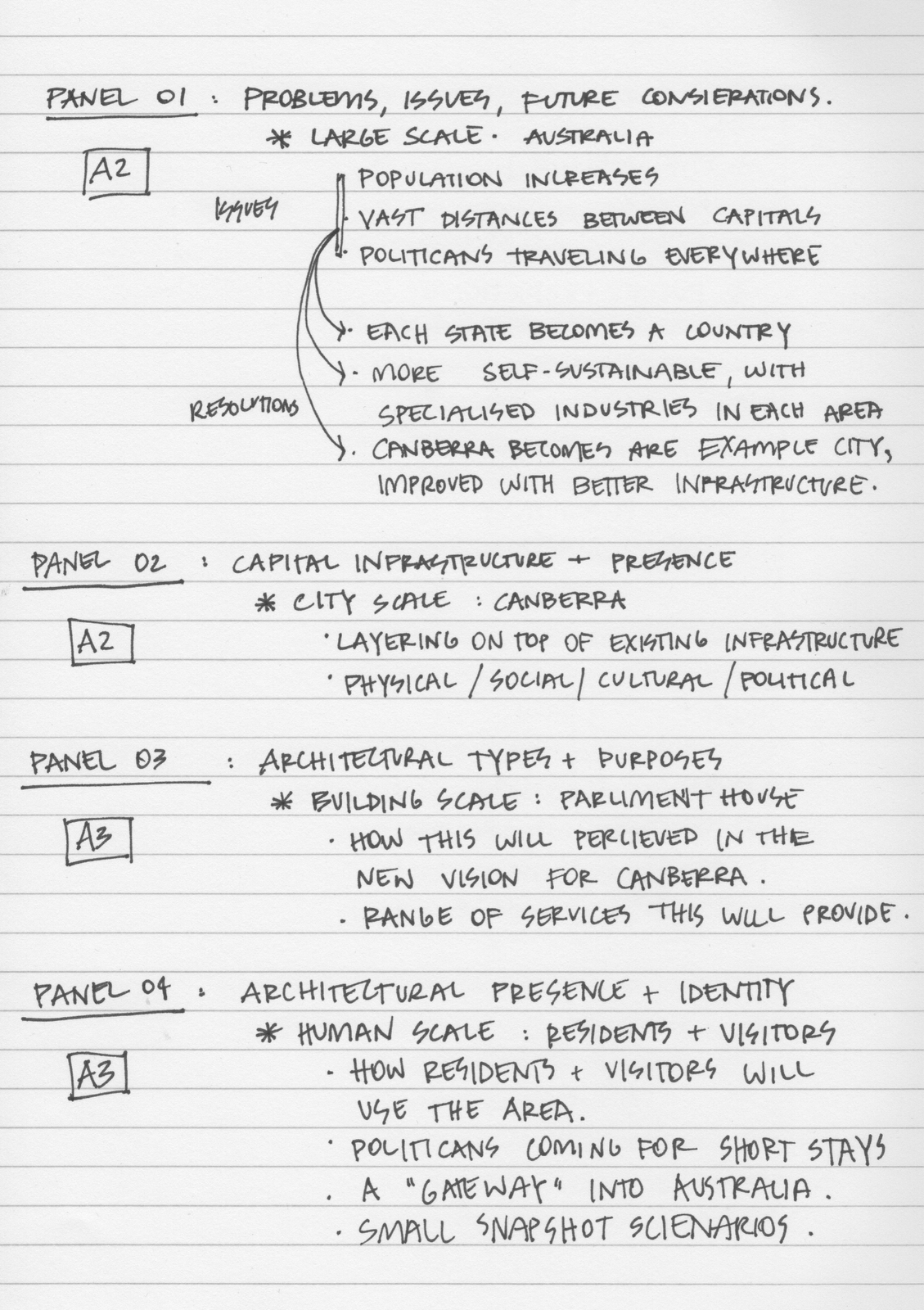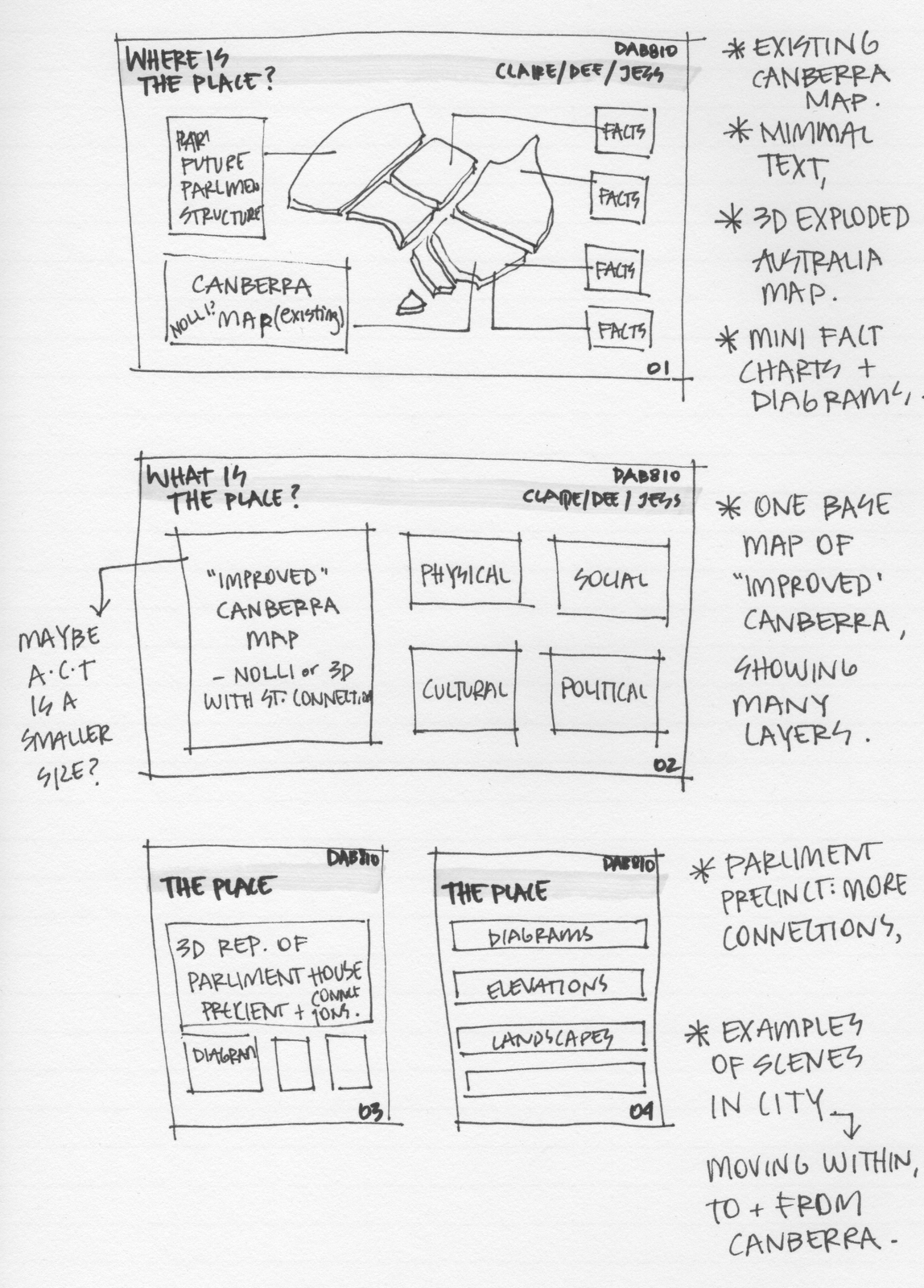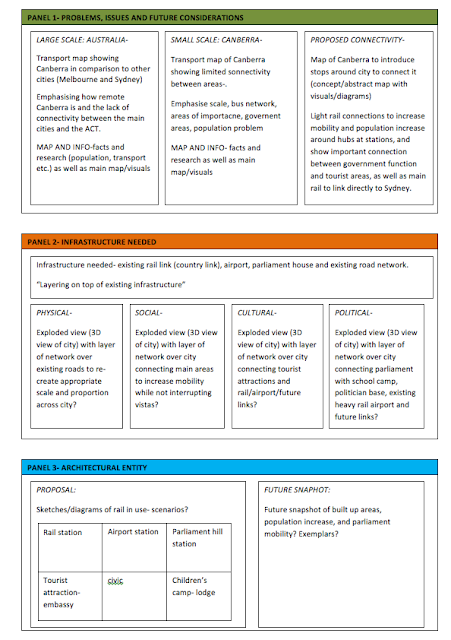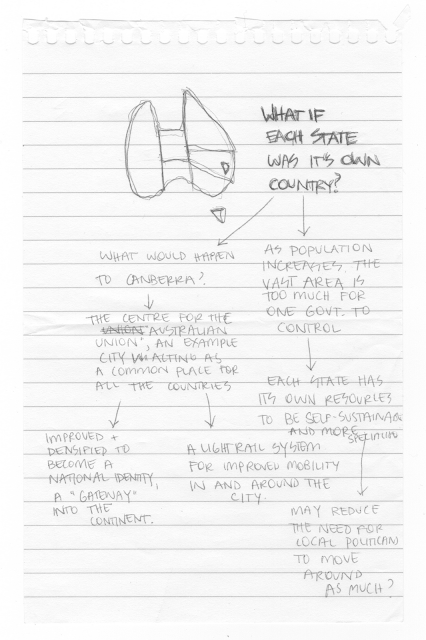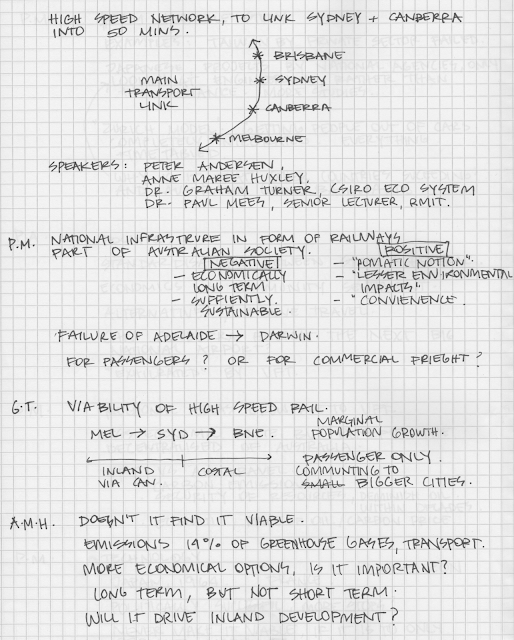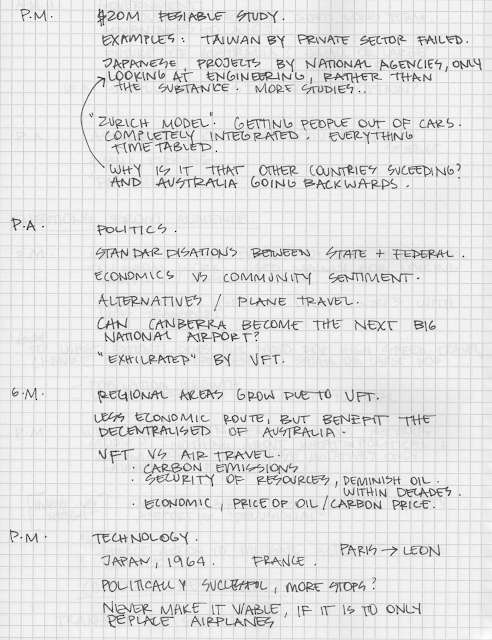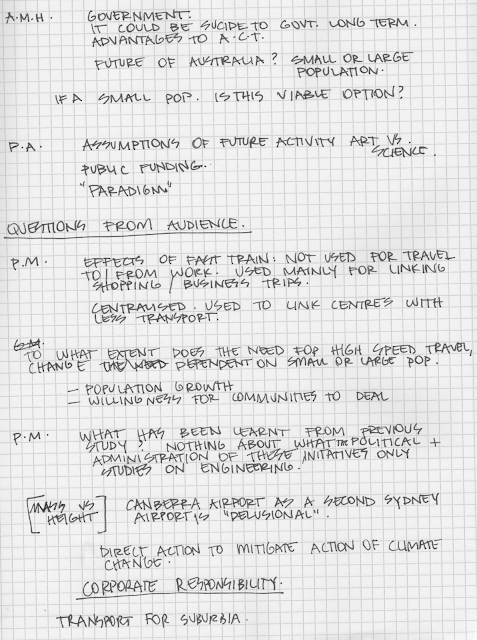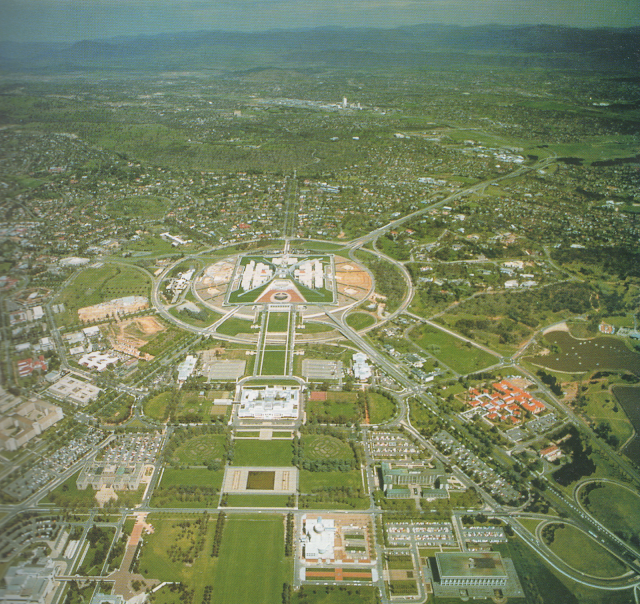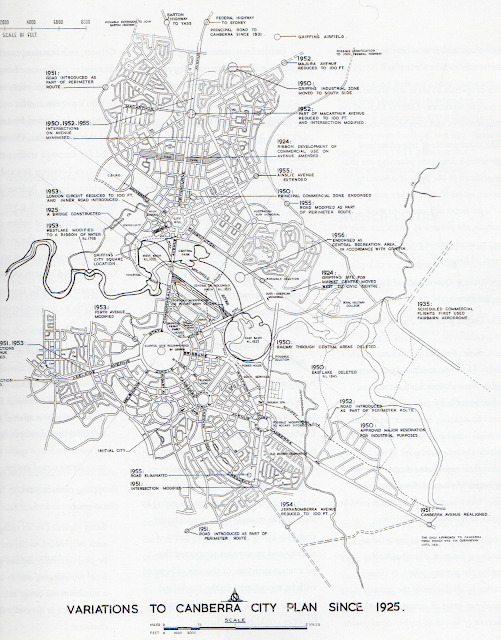Wednesday 31 August 2011
05 : Interim : Panels
As I've been allocated to complete the graphics required for panel 1, I have developed a little storyboard to keep me on track.
The assessment criteria states:
The assessment criteria states:
Capital Strategy (25%) : The panel presented and blog posted satisfies the following descriptions.With this in mind, here is a more detailed plan:
Your chosen strategy (flexible, mobile, distributed or virtual) was well investigated.
our idea creatively identified problems and issues associated with ways capital city / parliament worked today in Australia and a speculation was made to suggest your idea could lead to an innovative solution.
You summarised your investigation well and communicated all necessary information clearly and creatively with images and diagrams in your panel.
Your blog communicated your idea development well.
Monday 29 August 2011
05 : Interim : Development
This is the draft panel layout by Jess and Dee:
There is a lot of information to be displayed, and I'm wondering if there is a way to simplify this a bit more / if it is possible to add in my idea. I don't want to over complicate this project too much especially when there is not much time left. I'll do a bit of a sketch of what the panels might actually look like with this proposal..
I think the best way for this to work is if each of us does one panel - rather than all of us doubling up on the same thing.
There is a lot of information to be displayed, and I'm wondering if there is a way to simplify this a bit more / if it is possible to add in my idea. I don't want to over complicate this project too much especially when there is not much time left. I'll do a bit of a sketch of what the panels might actually look like with this proposal..
I think the best way for this to work is if each of us does one panel - rather than all of us doubling up on the same thing.
Sunday 28 August 2011
05 : Progress
Brain-wave..... what if Australia was separated into individual countries...
... small distances to manage
... union similar to European Union
... increased densification
only 6 days until presentation... this isn't the best time to have new ideas!!! - but I'll talk to my group about it and see, who knows - maybe it can be incorporated. This is just a really really rough sketch that I did when I first thought of the idea...
I'll wait and see what the overall plan for the panels is, based on what was discussed in the tutorial and decide if it's worth exploring this idea a little further.
At this stage, I think it's slightly realistic.. and I think that keeping Canberra as a central 'iconic' city. Each of the other capital cities would be given more power to make decisions that affect it's area. This allows the Australian Union in Canberra to focus on bigger, wider issues and the overall well-being of the continent.
... small distances to manage
... union similar to European Union
... increased densification
only 6 days until presentation... this isn't the best time to have new ideas!!! - but I'll talk to my group about it and see, who knows - maybe it can be incorporated. This is just a really really rough sketch that I did when I first thought of the idea...
I'll wait and see what the overall plan for the panels is, based on what was discussed in the tutorial and decide if it's worth exploring this idea a little further.
At this stage, I think it's slightly realistic.. and I think that keeping Canberra as a central 'iconic' city. Each of the other capital cities would be given more power to make decisions that affect it's area. This allows the Australian Union in Canberra to focus on bigger, wider issues and the overall well-being of the continent.
Saturday 27 August 2011
05 : Tutorial
I was too sick to come into the tutorial today, so I decided to a bit more research into the history of Canberra as a city - probably should have done this weeks ago, but it seems more relevant now.
I'm interested to hear what Jane's feedback on the material Jess and Dee had in the tutorial, and where we should go from here..
I did a bit of brainstorming about different types of mobility, and whether or not it would be better to focus on just one part - and what would be the best to implement into Canberra.. These ideas are pretty much just an extension / refinement of previous tutorials
I'm interested to hear what Jane's feedback on the material Jess and Dee had in the tutorial, and where we should go from here..
I did a bit of brainstorming about different types of mobility, and whether or not it would be better to focus on just one part - and what would be the best to implement into Canberra.. These ideas are pretty much just an extension / refinement of previous tutorials
Friday 26 August 2011
Thursday 25 August 2011
04 : Research : Statistics
I found a document which has lots of Canberra Statistics. It can be found by following the link here: http://www.cmd.act.gov.au/__data/assets/pdf_file/0016/154501/canberra-quickstats-2009-10.pdf
04 : Research : Canberra
I also looked into comparing it to other Australia cities, in terms of the scale of the blocks etc, if it turns out that this is an important part, I might pretty this up for the presentation. When you see it like this, I actually had to check to make sure I had it all at the same scale.
 |
| Canberra, Australia. |
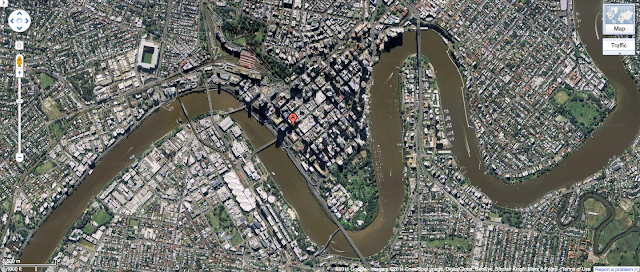 |
| Brisbane, Australia. |
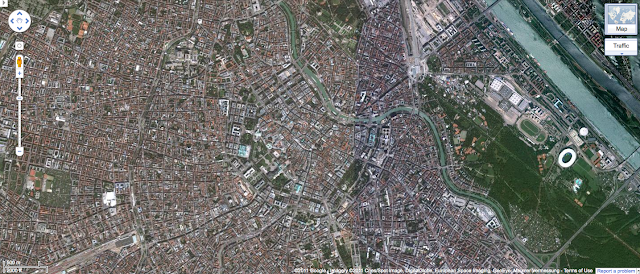 |
| Vienna, Austria. |
 |
| London, England. |
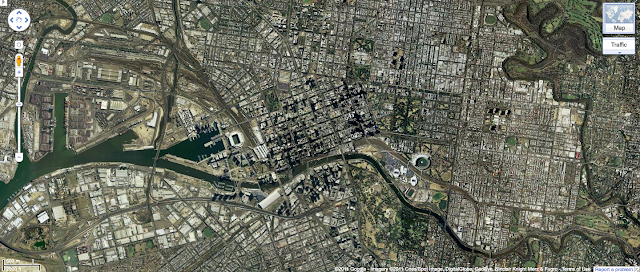 |
| Melbourne, Australia. |
04 : Progress : Site Analysis
We finally got a chance to meet and discuss everything today:
-- new rail to increase mobility around Canberra.
-- increase density to allow smaller, self-sustainable areas to thrive.
-- make it an example for other Australian cities... a "gateway" into the country.
What's worrying me, is trying to figure out how the parliamentary system will work in the future within this new 'example' city.
After the meeting I printed a base map of Canberra and did some site analysis overlays to assist us in the location of these new stations:
-- new rail to increase mobility around Canberra.
-- increase density to allow smaller, self-sustainable areas to thrive.
-- make it an example for other Australian cities... a "gateway" into the country.
What's worrying me, is trying to figure out how the parliamentary system will work in the future within this new 'example' city.
After the meeting I printed a base map of Canberra and did some site analysis overlays to assist us in the location of these new stations:
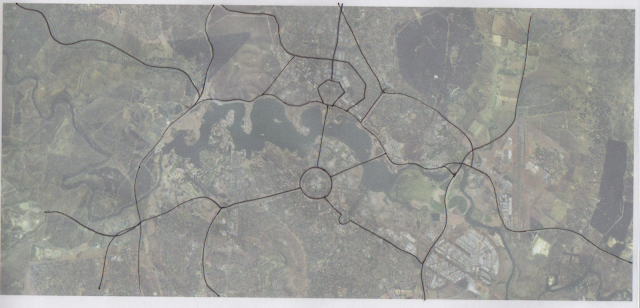 |
| Road Network |
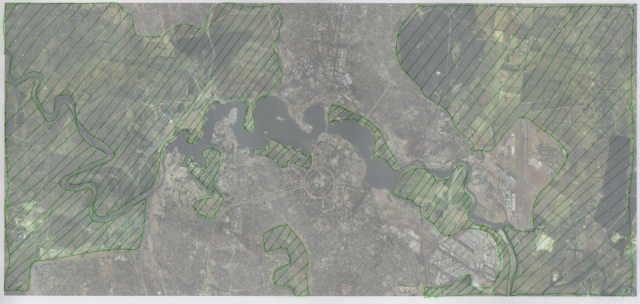 |
| Green Spaces |
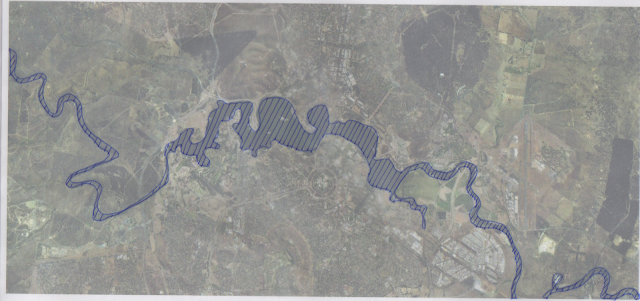 |
| River Network |
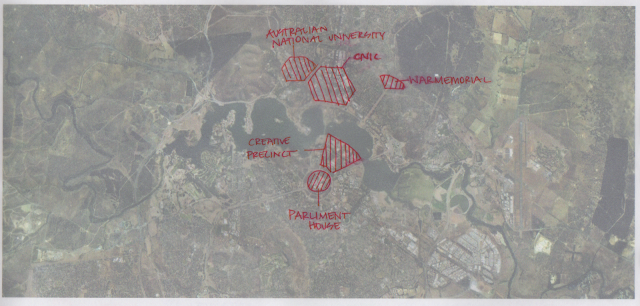 | |
| Places of Interest |
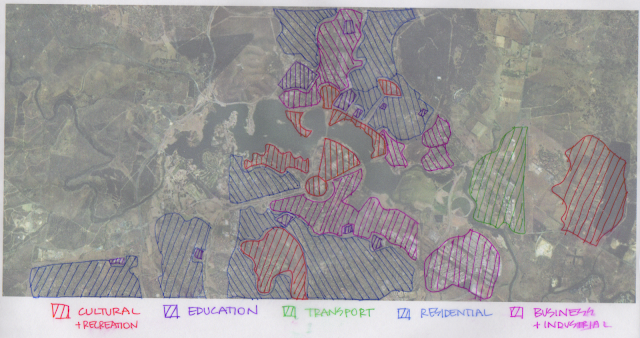 |
| Existing Precincts |
Wednesday 24 August 2011
04 : Research : VFT
"The federal election put the issues facing regional Australia back on the agenda, including transport,
infrastructure, and what constitutes a sustainable population. But whether we want a bigger Australia or not, is it necessary to look at the option of a very fast train linking up regions with cities? A group of business leaders, academics and transport experts join a public forum to discuss these issues."
Speakers:
Peter Anderson. Chief Executive, Australian Chamber of Commerce and Industry.
Anne Maree Huxley. CEO of Models of Success and Sustainability (MOSS)
Dr. Graham Turner. Senior Research Scientist, CSIRO Ecosystem Sciences.
Dr. Paul Mees. Senior Lecturer in Transport Planning at RMIT.
Presenter:
Phillip Adams. ABC National Radio, Late Night Live broadcaster.
Here are my written notes from the recording:
ABC National Radio, Late Night Live (2010, September 21). Population, sustainability and the viability of a VFT [Audio Recording]. Retrieved from http://www.abc.net.au/rn/latenightlive/stories/2010/3018184.htm
04 : Research : Canberra
I was chatting with a good friend of mine, who happens to be an amazing urban design/landscape architect in Melbourne, and he recommended a few things to me which were I think will be some great references for this project.... I'll be sure to share this information with the group when we try and meet for another progress meeting tomorrow.
One important factor that I didn't realise was that Walter Burley Griffins vision for Canberra, wasn't fully realised... there were lots of changes made by the government at the time to the original plan.. perhaps if they had stuck to the original plan, the development over time would have been better?
This is fully discussed in the "Canberra following Griffin" by Paul Reid.

"The history of Canberra mirrors the progress of city design in the twentieth century. All the urban design theories from the City Beautiful and Garden City movements, through Modernism and New Urban-ism to Environmental Design can be identified in the Australian capital city. The story of Canberra is not simply the story of the erosion of a brilliant city design; it describes the gradual replacement of one set of ideas with another." (page 1).
"The Mitchell Giurgola Thorp hilltop Parliament House is the only building that recognises the splendor of Griffin's setting. With its outstretched arms, it receives the many axes simply and directly, resolving them into an nonthreatening democratic monument." (page 7)
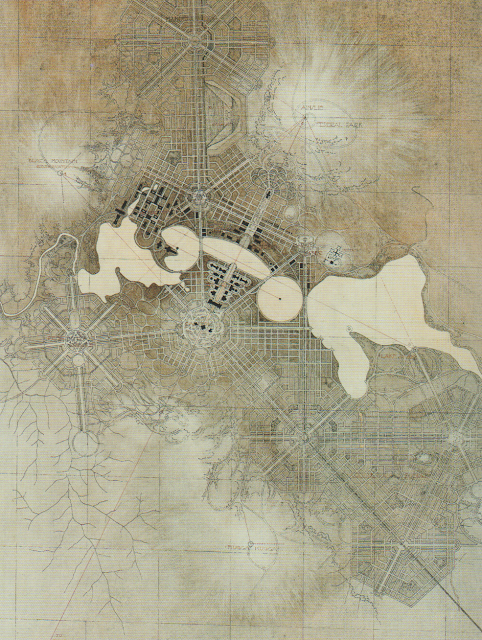
One important factor that I didn't realise was that Walter Burley Griffins vision for Canberra, wasn't fully realised... there were lots of changes made by the government at the time to the original plan.. perhaps if they had stuck to the original plan, the development over time would have been better?
This is fully discussed in the "Canberra following Griffin" by Paul Reid.
"The history of Canberra mirrors the progress of city design in the twentieth century. All the urban design theories from the City Beautiful and Garden City movements, through Modernism and New Urban-ism to Environmental Design can be identified in the Australian capital city. The story of Canberra is not simply the story of the erosion of a brilliant city design; it describes the gradual replacement of one set of ideas with another." (page 1).
"The Mitchell Giurgola Thorp hilltop Parliament House is the only building that recognises the splendor of Griffin's setting. With its outstretched arms, it receives the many axes simply and directly, resolving them into an nonthreatening democratic monument." (page 7)

"The exact geometric location of these star legs is far more than simple pattern-making on a plan. It is the device which nites the city with the site. Journeys along avenues head straight for the significant hills and may routes approach a centre with a significant hill lined up behind. The overall result is continually to remind the citizen of the integration of the man-made world with its natural setting." (page 64).
The diagram below shows the idea of the government triangle, and the attempt to restore 'Russel' to make it more of a gateway into the city.
Reid, P. (2002). Canberra Following Griffin: Design History of Australia's Capital. Canberra: National Archives of Australia.
Subscribe to:
Posts (Atom)


